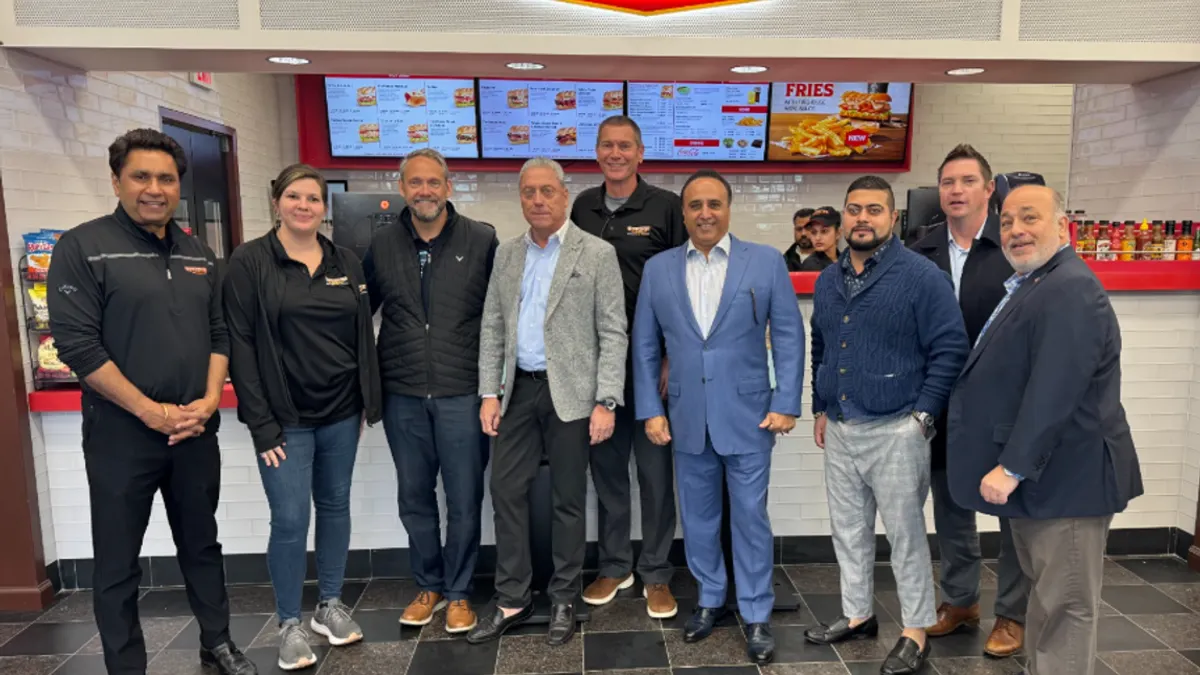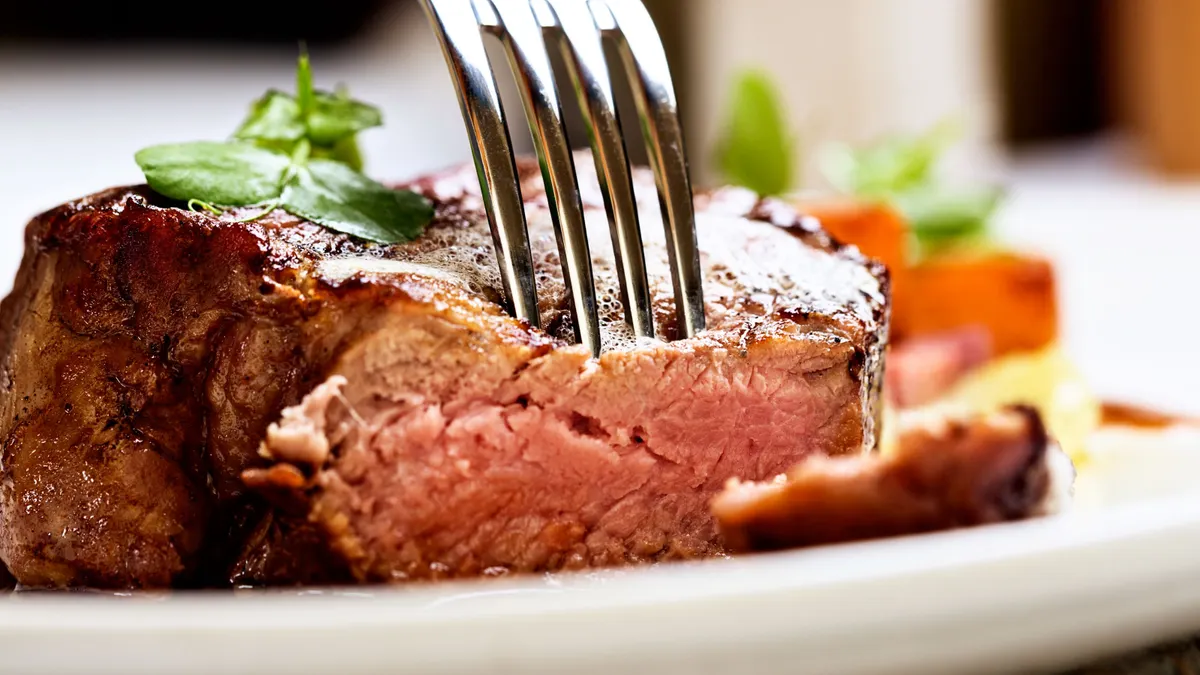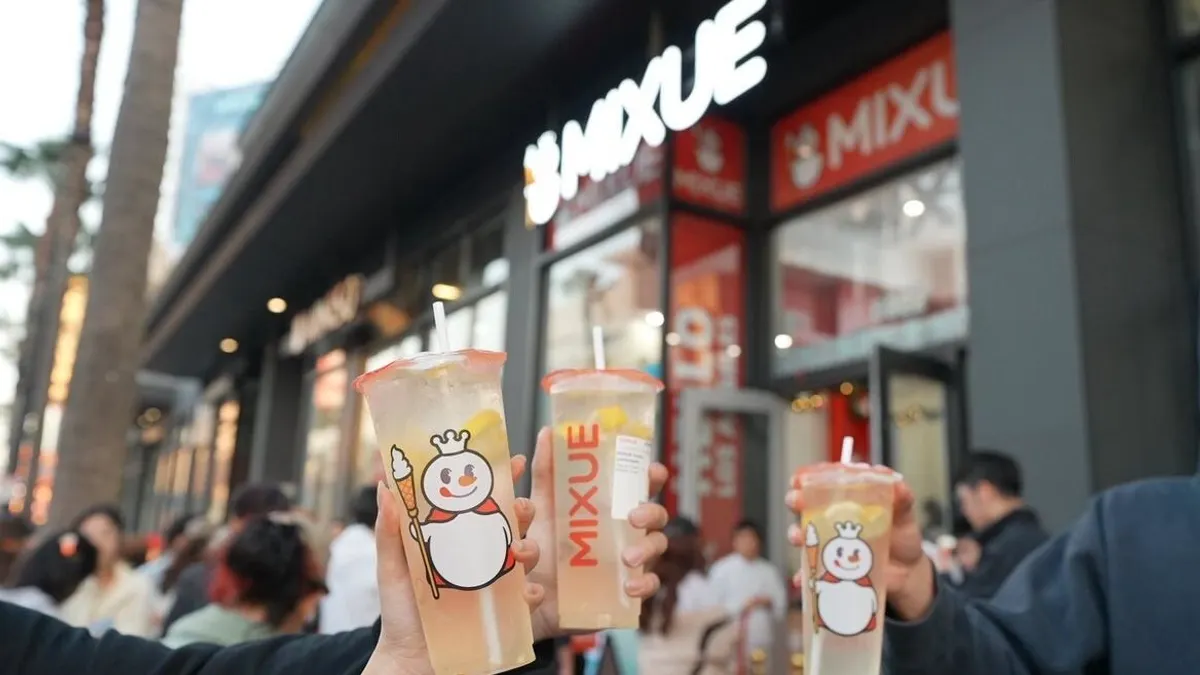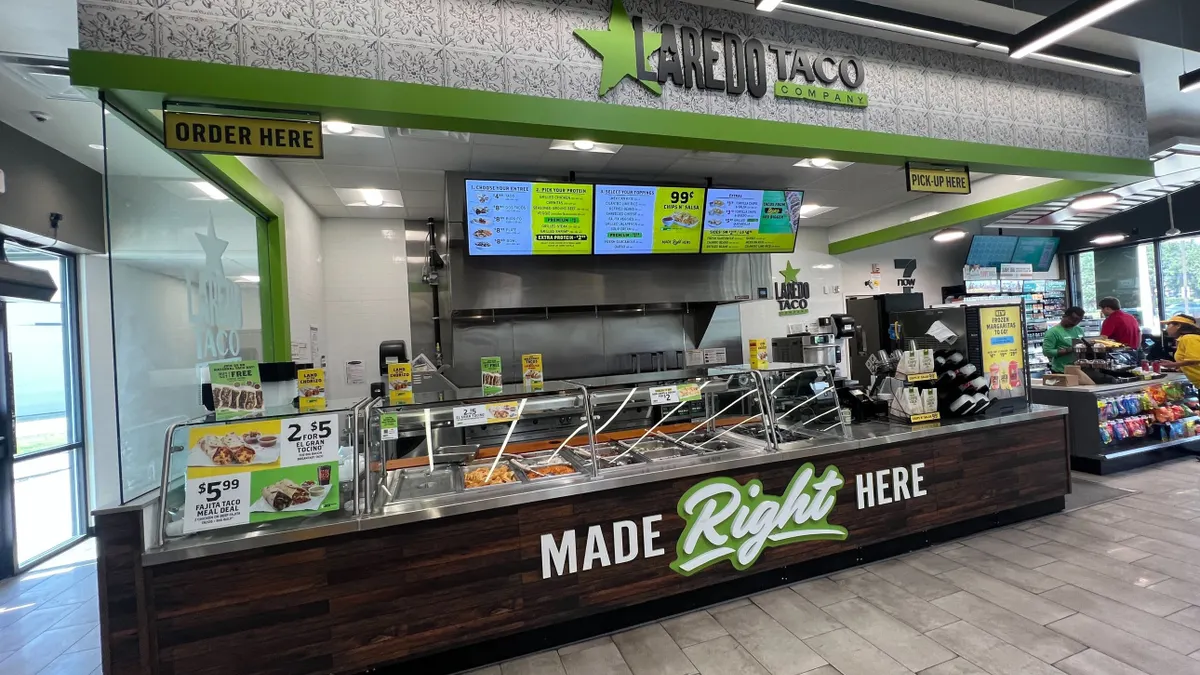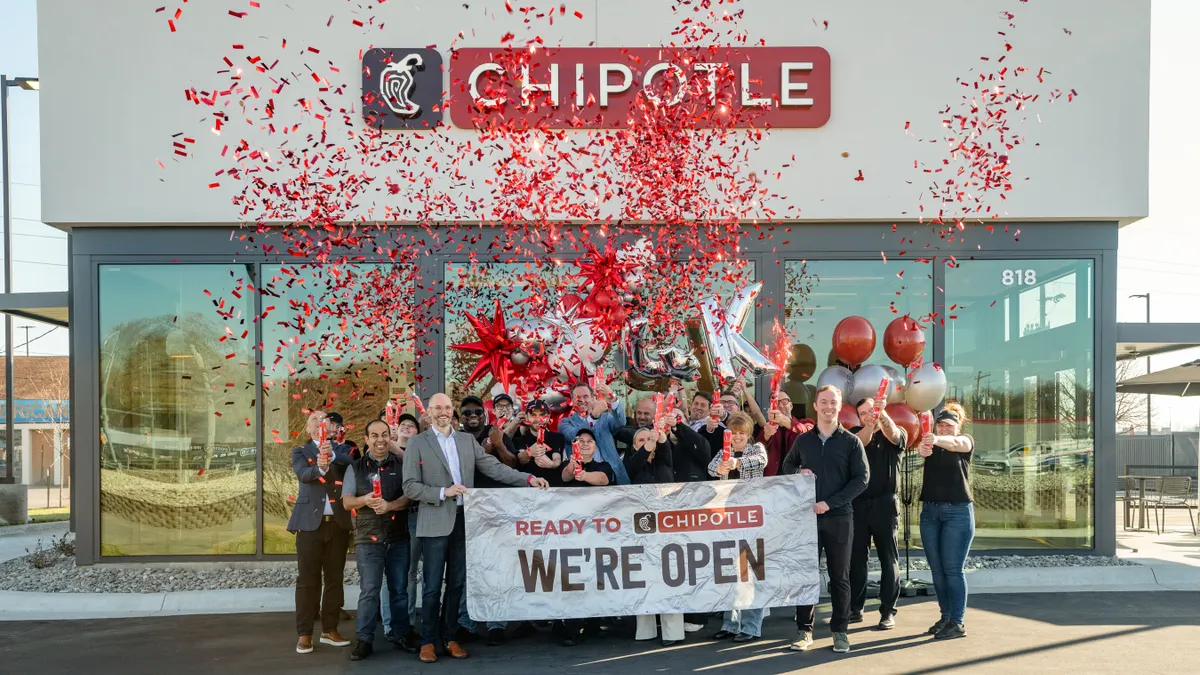When it came time to add a healthy meal station to his Philadelphia ShopRite stores, Jeff Brown thought about putting in a traditional salad bar. Instead, he ended up planting a popular salad restaurant in his produce section.
And when Peapod decided to develop meal kits for its online shoppers, it reached out to well-known chefs in Chicago and Indianapolis and asked what they could come up with.
Restaurants and grocers are competing fiercely for meal dollars across their physical and digital channels. But some companies are finding it pays to get along. Instead of duking it out, they're leaning on each other's core strengths to try and offer shoppers the best grocery and meal experience possible.
Restaurants have long offered branded meals and other products in stores. In an era of creative partnerships — where Kroger products now appear in Walgreens and Potbelly Sandwich Shop signs a deal to open locations inside Macy's department stores — it's not hard to see more opportunities for grocers and restaurants to team up.
"Grocers' expertise is still in the salad bar and the hot bar," Anne Mezzenga, co-founder of consulting firm Red Archer Retail and former head of marketing and partnerships for Target's Store of the Future project, told Grocery Dive. "If they can start collaborating more with restaurants, that can really elevate both sides at a local, regional level."
'Interrupting normal shopping behaviors'
One of the most prominent ways grocers and restaurants are partnering up is by building in-store outposts aimed at driving mealtime traffic. The strategy has caught on at major grocery chains, and it promises to boost trips and brand cache while also offering restaurants low-cost expansion.
In Toledo, Ohio, two Kroger stores will add quick-serve outlets run by Tony Packo's, a popular Hungarian hot dog joint made famous by the television show MASH. The first will open later this month, the next sometime early next year.
Scott Radel, executive vice president with Tony Packo's, said for years the supermarket chain has stocked its grocery products, including hot dog sauce, pickles and chili. Kroger also appreciated Packo's devoted local fan base and the fact that it had operated in-store outlets at a local grocer in the past. He said the Tony Packo's Express stands will carry the restaurant's greatest hits, including chicken paprikas, stuffed cabbage, strudel, mashed potatoes and hot dogs.
"[Kroger] does an exceptionally good job with grocery and deli, but they were less satisfied with their hot food sales," Radel told Grocery Dive. "They wanted folks that specialize in restaurants to come in."
The arrangement, said Radel, will build brand awareness for Tony Packo's. If the deal expands — something Kroger and the chain are already discussing — it also lets the five-store operator open in new markets without investing in a full-size location.
Kroger has applied the same formula to stores in other markets. Rapid Fired Pizza, the popular chain that makes pies in three minutes or less, has signed on to build outposts inside select Kroger stores throughout Ohio. In Kirkland, Washington, a recently opened QFC restaurant features a satellite location for Tutta Bella, a popular Italian chain.
Whole Foods has also signed on local restaurant vendors, even after Amazon acquired the chain in 2017. Meanwhile, Walmart Canada has opened more than 100 Freshii locations inside its stores while Hy-Vee has added Wahlburgers menu items to its Market Grille restaurant locations.
Mezzenga said many grocers' hot bars and salad stations pale in comparison to restaurant fare, so from a customer experience standpoint, partnering up makes sense.
"When partnerships work, they're interrupting normal shopping behaviors for consumers and allowing them to do more things in one place," Mezzenga said. "It saves them a trip and ultimately provides convenience, and that means they're going to want to come back."
But while restaurant operators can take the burden of menu development and execution off grocers' shoulders, managing two separate businesses under one roof can be challenging, said Wade Hanson, principal with Technomic. Retailers and restaurants operate two very different business models, he said. And coming to an agreement on terms can be difficult, and may not end up agreeable for both sides.
Radel with Tony Packo's said he and his team are going to try to be mindful of their surroundings when they open the first express outlet inside Kroger.
"We're going to be sharing refrigerator and freezer space," he said. "We want to make sure we're not stepping on anyone's toes and that we can get regular feedback on how we're doing and how things are done."
It can also be difficult for smaller restaurants to invest in store outlets and keep pace with the growth demands of grocers. Kroger-owned Mariano's saw its 28-store deal with Chicago’s Pork & Mindy’s fizzle this month after the restaurant filed for Chapter 7 bankruptcy.
Other grocers are choosing to open their own restaurant concepts rather than try to balance the needs of two corporate entities under one roof. In Seattle, PCC Community Markets, the nation's largest cooperatively owned grocer, just opened its first in-store eatery — a seafood stop that serves freshly steamed clams, chowder and cioppino along with wine and beer. CEO Cate Hardy said the co-op chose to build its own restaurant rather than bring on a partner because it felt that was the best way to keep the experience consistent with the rest of the store.
Rick Stein, vice president of fresh foods with the Food Marketing Institute, sees in-store restaurant brands as a temporary solution for grocers as they figure out how to elevate their foodservice in-house.
"To me it's a defensive move," he told Grocery Dive. "If I don't have the capabilities or wherewithal to do it on my own, having a partner is better than being absent or doing it wrong."
"When partnerships work, they're interrupting normal shopping behaviors for consumers and allowing them to do more things in one place."

Anne Mezzenga
Co-founder, Red Archer Retail
Brown, who oversees 12 Philadelphia area ShopRite stores, said he'll partner with a restaurant if he feels it offers a compelling value that his team couldn't develop on their own. With Saladworks, he recognized the chain's popularity, its focus on portion control and use of trendy ingredients like quinoa and edamame. He said having two separate businesses in the same site pushes each to do better with service, cleanliness and food preparation.
"We do all those things but having a very disciplined restaurant I think takes up your game," Brown said.
So far, Saladworks has planted locations at two ShopRite stores, and Brown said he would like to add more, noting his unit and dollar sales far exceed those he's seen with traditional salad bars.
Kelly Roddy, Saladworks' CEO, said the store locations have boosted brand impressions for his company thanks to daily shopper traffic. He said Saladworks is exploring additional grocery partnerships, and noted a key to the success of its ShopRite collaboration is the prominent placement inside the produce section.
"People can find the milk, they find the eggs, they find the bread, but if you have a restaurant you need to put it out in front of them," he told Restaurant Dive.
Food halls, meal kits and ghost kitchens
These partnerships go beyond in-store restaurants. As grocers continue to build large destination-style stores, they're adding food halls that incorporate multiple restaurant brands.
Kroger on the Rhine, the chain's flagship store in Cincinnati, features a food hall with several regional favorites, including Eli's BBQ and Dope Asian Street Fare. There's also the grocer's own restaurant brand, Kitchen 1883. In June, Korean grocer H-Mart opened a 40,000-square foot market in San Diego featuring a food hall that brought together local restaurants like Myungrang Hot Dog, a local street food restaurant known for its rice corn dogs, with overseas favorites like Sinjeon Food Sys.
In addition to drawing in curious shoppers, Mezzenga said food-hall style stores can offer a compelling online shopping experience by selling restaurant meals alongside frozen food, gallons of milk and bags of coffee. Kroger currently contracts with Instacart and Shipt for grocery delivery, while Eli's BBQ delivers through third-party providers like DoorDash and Grubhub. A company spokeswoman declined to comment on Kroger on the Rhine's e-commerce strategy going forward.
"If you think about what the customer wants, it's meals and groceries they want when they want them," Mezzenga said.
Grocers and restaurants can combine to carve out additional efficiencies and revenue opportunities, Mezzenga said. Restaurants are buying up space in ghost kitchens. Grocers could eventually share that space as their prepared foods offerings evolve and come online. Grocers could also lease space inside their commissaries or store backrooms to restaurants, she said, and even cross-promote delivery between the retail and restaurant brands.
As retailers optimize their selling floors and put more of their online fulfillment into automated facilities, more space may free up for meal preparation.
"You could end up with several thousand feet of space where you could put one of these commissary kitchens," Mezzenga said. "It's all about getting as local as you possibly can."
On the more philanthropic side, restaurants and grocers can work together to repurpose food waste, Mezzenga noted. The concept has caught on in Europe. In Amsterdam, three employees at Albert Heijn, the chain owned by Ahold Delhaize, started Instock, a restaurant chain that crafts dishes using surplus food collected from the chain's stores across the Netherlands. In Helsinki, Loop Restaurant uses excess food collected from stores and farmers markets to make its dishes.
"They take food that would be thrown away and use it to inspire their menus," Mezzenga said.
There's also room for menu collaboration, judging by some recent tie-ups. Beginning in December, Whole Foods will offer premade Hannukah meals planned by local chef Michael Solomonov, founder of the award-winning Philadelphia restaurant Zahav. The meals, which include dishes like chicken schnitzel with apple amba sauce, feed eight and sell for $140. Dishes will also be available at Whole Foods' hot bars.
Over the past few years, online grocer Peapod has unveiled meal kits with popular Midwestern restaurants, including Big Bowl and Wildfire, and chefs like Chicago's Stephanie Izard. According to Peapod spokeswoman Nicole Friedman, Peapod is learning from the performance of items like barbecue bison meatloaf and Yucatan fish tacos. Restaurants, meanwhile, benefit from the increased revenue and exposure.
"The restaurants are winning on a few fronts and we are simply facilitating the connection with our customers via these solutions," Friedman told Grocery Dive in an email.
While the idea of sharing kitchens and digital storefronts may sound like a recipe for next-generation retailing, there are plenty of ways the partnerships could go wrong. Combining prep facilities, for instance, would require sorting out regulatory and food safety protocols, not to mention different standards for sorting and receiving ingredients, Mezzenga said.
"Kroger is held to one standard, but then this restaurant is held to another standard, so there are a whole host of issues that come out of that."
Despite the risks, restaurants and retailers still need to be thinking creatively about ways to work together, said Brown. Companies should be willing to experiment with new concepts and accept that there will be failures. Brown said he didn't anticipate SaladWorks would perform as well as it has in his two stores, which serve many low-income shoppers.
"If you're going to create the ultimate restaurant experience for the consumer, I think it dictates some experimentation, and I guess the more you do it, you learn a little bit more about what's going to work and what's not going to work," he said.
Julie Littman and Jessica Dumont contributed to this report.








